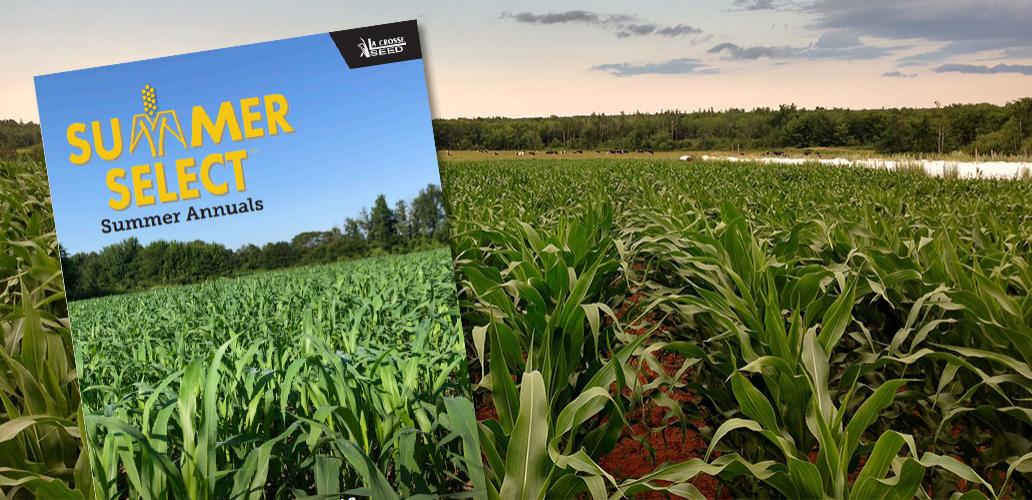Forage First Guide I Summer Select Guide
Greater Value. Good Move. Yield and quality matter. But there’s more. Our goal is to provide a higher standard for forage to maximize ROI– while keeping your wallet in mind. We take pride in delivering proven products that increase the bottom line at a good price.

Vivant Forage brassica cover crop is a quick-growing brassica (upright and spreading cool season annual) with very little bulb development. Vivant Forage brassica is best suited for multiple grazing cycle situations because of its excellent regrowth. Vivant Forage can be used to extend the grazing season in the fall or planted alongside warm season annuals for multiple grazings in the summer. With proper management (first grazing in 40-45 days AND subsequent grazing cycles every 25-30 days when grazed no less than 4 in.), it has the potential to yield over 5 tons of dry matter per acre.
CHARACTERISTICS:
Non-Forage Benefits:
1 = Poor; 5 = Excellent
Compaction Alleviation: 3
Weed Suppression: 4
Biomass Production: 4
Erosion Control: 3
Disease/Pest Control: 3
Pollinator/Beneficials: 3
P & K Cycling: 3
Ease of Establishment: 5
Nitrogen Fixer/Scavenger: Scavenger
Nutritional Value:
Values Vary Greatly Depending on Maturity
Crude Protein: 14
NEL¹ Mcal/lb.: –
ADF%²: 23
NDF%³: 22
TDN: 78
DM Tons/Acre: 2-5
Days to First Harvest: 35-40
Days to Next Harvest: 25-30
¹- Net Energy for Lactation = Energy available after subtracting digestive and metabolic losses
²- Acid Detergent Fiber = Low values mean more digestible
³- Neutral Detergent Fiber = Low values mean cows can eat more
Ranking (Good, Better, Best):
Graze: Best
Baleage: Better
Chop: Good
SEEDING:
Planting Time:
July-Sept.
Seeding Rate:
Mono (lbs./acre): 4-6
Mix (lbs./acre): 2-3
Forage (lbs./acre): 5-6
Aerial (lbs./acre): 5-6
Seeding Info:
Carbon/Nitrogen Ratio (C:N): 10:1 – 15:1
Seeding Depth (in./with drill): 1/4
Seeds/lb.: 165,000
Bulk Density (lbs./ft.): 44
Aerial Application Rate: 5-6
Germination Soil Temp.: 45 F
USDA Hardiness Zone: 7
Days to Emergence: 4-6
MANAGEMENT:
Considerations
Brassica Crops can cause animal health disorders if not grazed properly. Introduce grazing animals to brassica pastures slowly (usually over 3-5 days). With extremely high forage values, brassicas can cause problems if hungry animals are turned out into predominate brassica pastures. Even though traditional recommendations allow for 2/3, we actually recommend keeping brassicas to under 1/3 of the grazing animal’s diet- always supplement brassicas with dry hay or other grasses (higher in fiber).
Ratings
Scale 1-9, where 9 = best or most pronounced
Compaction Alleviation
Weed Suppression
Biomass Production
Erosion Control
Disease/Pest Control
Pollinator/Beneficials
P & K Cycling
Ease of Establishment
- Known for its quick regrowth, even under close grazing
- Different than turnips, all the energy of the plant is contained in the leaves
- High digestibility – suitable for dairy, beef and sheep
- When fed, brassicas need to be combined with other forages (no more than 1/3 of the total animal diet) to prevent potential livestock disorders

.png)
.png)


.png)










